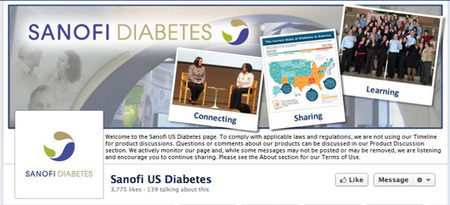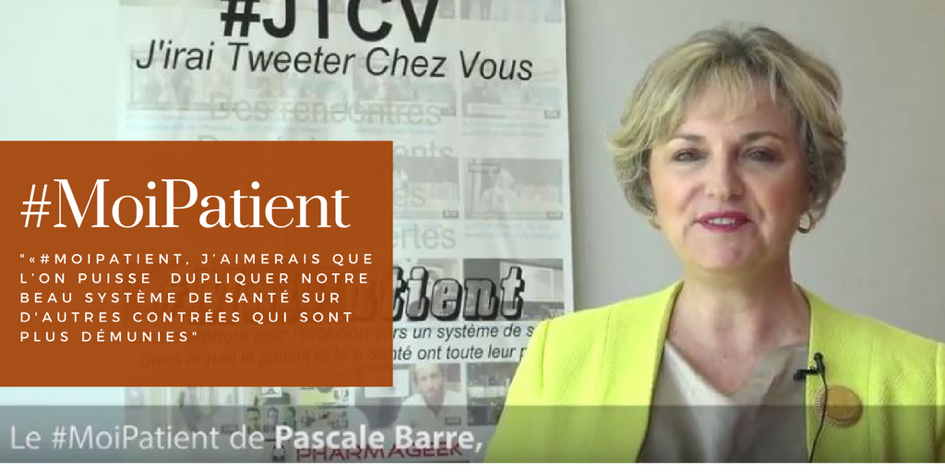Social Media Help Diabetes Patients (And Drugmakers) Connect
26/09/2013Being a Community Manager in Pharma @ ePatCon12 – PharmFresh.TV
26/09/2013Sanofi, diabetes and social media
Sanofi’s social media use is certainly at the high end of what would be expected from a major pharmaceutical company, but what makes the company’s use of these channels particularly interesting is its focus.
The company has corporate presences on Facebook and Twitter, but across these, and other social media channels, Sanofi US concentrates heavily on diabetes.
The company uses Twitter as a customer service tool for its GoMeals iPhone and iPad apps, when it started blogging last year it was with the Discuss Diabetes blog and, of course, there are diabetes-themed Twitter and Facebook accounts.
Sanofi is the only pharma company to focus its social media efforts so firmly on one therapy area give a real sense of a company looking to own pharma social media in diabetes.
This makes sense, with one in three Americans expected to have diabetes by 2050 the condition is a major focus for the industry. Product-wise it is an important time for Sanofi, which in June released a major safety study on its flagship insulin brand Lantus (insulin glargine) and submitted its GLP-1 agonist Lyxumia (lixisenatide) to regulators in the US, Europe and Japan for approval.
But another key factor is Dennis Urbaniak, who is the head of Sanofi’s US diabetes business unit and a long-time advocate of social media in pharma.
I caught up with him recently to find out more about how Sanofi uses social media in diabetes, the ‘real time point of view’ it can offer and why social media should never be thought of as an advertising channel.
What benefits has Sanofi seen from its use of social media channels, such as the diabetes blog and Twitter?
« Our main benefit has been just how much we have learned by engaging directly with the diabetes community. The social nature of these platforms has allowed us to meet a lot of new people, listen to what they have to say, and start a conversation with them on living with diabetes, which has brought so much valuable perspective for our entire team. »
How does the time the company invests in these channels compare with what goes into traditional channels?
« In the US, we have a dedicated team overlooking this effort with a dedicated community manager, Laura Kolodjeski, who manages the communication and writes our Discuss Diabetes blog.
« We also encourage the rest of our team members to participate directly in the conversation or at least indirectly by listening.
« As we gain more experience with the diabetes community, the level of time, interest, and resource to this approach continues to grow because we are seeing so much value in the approach in terms of our own education. »
You mentioned Laura’s involvement, is social media the responsibility of just one person at Sanofi or are more people involved?
« We have several people engaged in social activity in the US, which includes a core formal team with Laura Kolodjeski and Michele Polz, who also coordinate closely with Susan Brooks, Lindsey Schedler, and Jack Cox from US Communications.
« I personally like to spend as much time as I can using social media because I have seen tremendous value in doing this and I strongly encourage all my team members to find a way to engage in a way that they are comfortable.
« We have also established a corporate social media policy and now provide access to social sites for all employees in the company to encourage them to get a direct view of the conversations that are taking place every day in the communities we serve. »
Would you like to see more Sanofi employees use social media as part of their jobs, and would your company benefit from this?
« I definitely would. We have a strong passion and commitment at our company for gaining a deep understanding of the healthcare consumer’s point of view and I have found social media to be a highly effective way to help to gain this understanding.
« When used properly, the benefit to our company comes in three main ways, first you get a real time direct point of view that you would never get in traditional research approaches, second you meet very interesting people with great ideas on things that can be done better to satisfy healthcare consumers with something they really need, and third you teach employees the benefit of transparent customer feedback, which greatly enhances the quality of what we are delivering to the market. »
Where do these channels fit within the communications mix for Sanofi and how do you integrate them with traditional communications activities?
« In my opinion, these channels are listening and dialogue channels that give us a unique opportunity to contribute to a community.
« The integration internally should come through sharing the learning from this experience with our other programmes to help strengthen the quality of the content and programmes we are developing.
« I also feel very strong that we always need to respect the community first, meaning we always need to be transparent about our presence and our intent, which is to learn from, and where appropriate, contribute to the communities we are interested in serving.
« We should never look at these channels as advertising or promotion channels and should only provide this information when it is requested and in a format that satisfies our regulatory obligations.
« For me, this is very easy to support because we are not engaging to promote but to learn and hopefully take away approaches that could help improve our other communications. »
What potential do new communications channels have in diabetes when it comes to reaching patients and prescribers, and to what extent do you think Sanofi has fulfilled that potential?
« I think the potential is significant in the context of learning the true needs of the healthcare consumers we serve, identifying new approaches to add more value to them and involving them in developing new solutions, everything from treatment research and development to new commercial platforms that can actually improve the customer experience.
« We have not even come close to fulfilling this potential and I don’t see it as a point where we will claim that we have, I see it as a commitment to ongoing engagement and contribution to the communities we care about, which is a responsibility we all have in healthcare. »
See on www.pmlive.com




